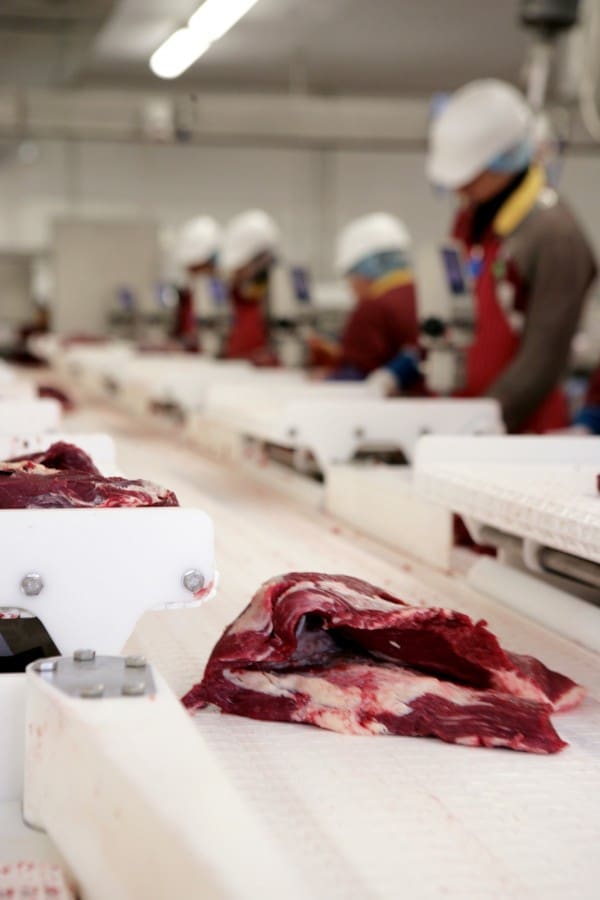RATES of national beef slaughter have hit four-year highs this month, although weather has continued to challenge logistics in getting cattle to processing plants heading into Easter break.
Last week, ended Friday March 22, saw the national adult cattle slaughter tally soar to 136,503 head. Not since April 2020 – at the tail end of the continental scale drought – has weekly slaughter been so high.
 The weekly tally has been surging higher for the past four weeks, although the trend has been difficult to monitor because of lengthy delays in data collection (see comments below).
The weekly tally has been surging higher for the past four weeks, although the trend has been difficult to monitor because of lengthy delays in data collection (see comments below).
The past four processing weeks have accounted for more than 532,000 head, or an average of 133,244 per week (see Beef Central’s home page Industry Dashboard graphs).
A number of factors have been at play behind the rise, including a sense of urgency among some processors to ‘stockpile’ a little more beef in the chillers, as the industry enters a period of short production weeks starting this Friday (two Easter weeks, follows by May Day and ANZAC Day holidays). Some large Queensland processors will also also lose a local show holiday, heading through April.
Another factor is a noticeable rise in female slaughter in recent weeks, as more stock camps move back to work as conditions cool off and preg testing results come to hand. Last week saw the female portion of the national kill reach 48.08pc, its highest level this year, well above the 47pc ‘tipping point’ between herd expansion and contraction (if only for a week).
Another factor in that rising female slaughter is the relative strength of international grinding beef markets at present, with a sustained rise in imported 90CL grinding beef, now up more than 100c/kg over the past couple of months.
Adding further to recent production volume, a number of large Queensland plants have worked additional Saturday shifts in recent weeks, in an effort to clear some of the backlog that has emerged, partly due to earlier wet weather delays and supply pressure.
Yet another factor has been the gradual addition of a few more staff in plant rosters this year, and the scheduling of new and enlarged shifts at some plants.
JBS Dinmore, for example, is now killing around 2400 head per day across two shifts, both operating four days each week. A string of southern processors have also expanded capacity a little since last year, including TFI Murray Bridge.
Despite all that, some processing stakeholders suspect the industry is again pushing up against operating capacity, given the labour resources at hand.
Last year, that capacity figure was a round 115,000-120,000 head per week, growing a little as the year progressed and a few more staff became available.
This year, the magic figure appears to be around 135,000 head, a couple of experienced processors have told Beef Central.
The obvious question, as the industry herd size and production continues to gain momentum after three, and in places four great seasonal cycles, is what happens when supply of slaughter cattle goes above that figure again.
Long delays in delivery of slaughter data
Beef Central published the following comment on long delays to weekly kill data as part of Tuesday’s weekly kill report:
National slaughter performance remains a mystery
National slaughter performance remains something of a mystery this month, with no NLRS report issued since week ending 1 March. That’s 25 days ago.
The reason given by NLRS is non-delivery of statistics by some processors, making data unreliable. Whether the delay is by design, or some underlying problem, it leaves the broader industry (including the processing sector) at a considerable disadvantage.
To make matters worse, the weekly national slaughter results for many years were issued, without apparent difficulty, on a Tuesday. That data (for the week ended the previous Friday) now routinely comes out on a Wednesday – meaning the current weekly cycle is already half over.
In an industry which is already light-years behind the US in terms of meat and livestock supply chain performance data collection, a development like this is an embarrassment to the industry. Stakeholders can do better.
